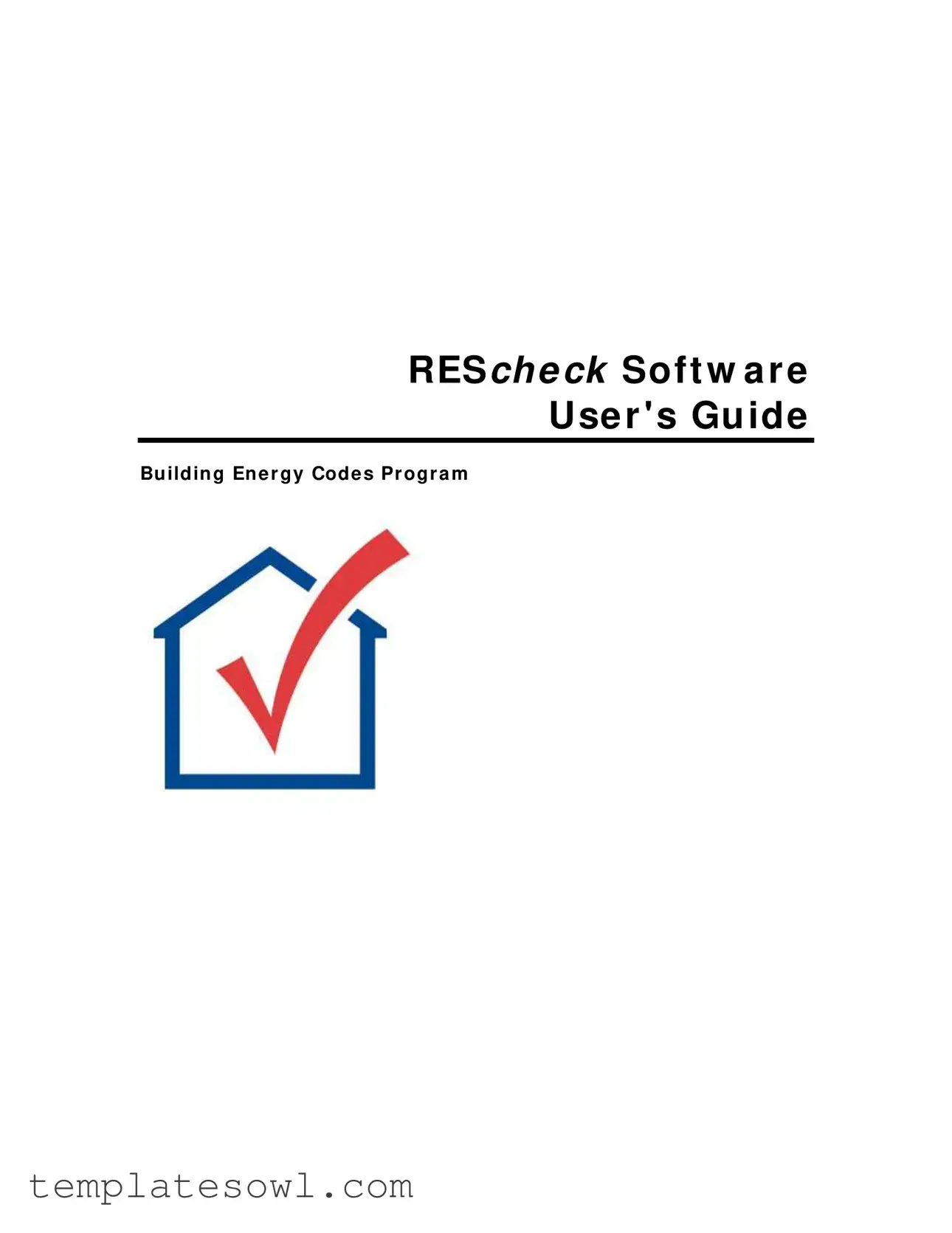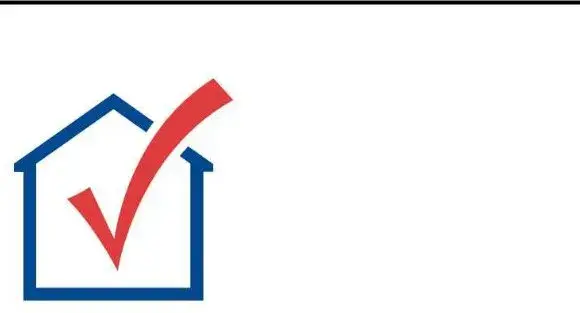RESCH E CK Soft w a r e
U se r ' s Gu ide
Bu ildin g En e r gy Code s Pr ogr a m
Ov e r v ie w
This sect ion describes how t o use t he RESch eck TM soft w are. RESch eck is designed t o dem onst rat e com pliance w it h t he requirem ent s of t he Council of Am erican Building Officials ( CABO) Model Energy Code
(M EC) and t he I nt ernat ional Code Council ( I CC) I nt ernat ional Energy Conservat ion Code ( I ECC) . I t is t he m ost flexible approach for
m eet ing t he MEC insulat ion and w indow requirem ent s. The RESch eck soft w are runs on t he Microsoft Window s operat ing syst em .
The soft w are dem onst rat es com pliance w it h t he 1992, 1993, and 1995 edit ions of t he MEC, t he 1998, 2000, 2003, and 2006 edit ions of t he
I ECC, t he 2006 I nt ernat ional Resident ial Code ( I RC) , and t he follow ing st at e and count y resident ial codes: Arkansas, Georgia, Minnesot a, New Ham pshire, New York, Verm ont , Wisconsin, and Pim a Count y, Arizona. The soft w are enables you t o quickly com pare different insulat ion levels in different part s of your building t o arrive at a package t hat w orks best for you .
RESch eck is appropriat e for insulat ion and w indow t rade- off calculat ions in resident ial det ached one- and t w o- fam ily buildings ( referred t o as single- fam ily buildings) and m u lt if a m ily buildings
( such as apart m ent s, condom inium s, t ow nhouses, and row houses) . Mult ifam ily buildings include r e side n t ia l bu ildin gs t hree st ories or less in height w it h t hree or m ore at t ached dw elling unit s.
The soft w are generat es a report t hat list s t he insulat ion and w indow levels of your proposed building, as w ell as t he addit ional basic requirem ent s found in t he code.
RESch eck perform s a sim ple U - fa ct or x Area ( U A ) calculat ion for each building assem bly t o det erm ine t he overall UA of your building. The UA t hat w ould result from a building conform ing t o t he code requirem ent s is com pared against t he UA for your building. I f t he t ot al heat loss ( represent ed as a UA) t hrough t he bu ildin g e n v e lope does not exceed t he t ot al heat loss from t he sam e building conform ing t o
t he code, t hen t he soft w are declares t hat you pass. A high - efficiency equipm ent t rade- off can also be perform ed.
2 0 0 6 I ECC, Pim a Cou n t y , N e w H a m psh ir e , or Ge or gia : When any of t hese codes is t he select ed code and high - efficiency m echanical equipm ent has been ent ered, t w o separat e calculat ions are perform ed w hen t he Check Com pliance but t on is clicked - t he UA calculat ion and
REScheck User’s Guide, Oct ober 2008 |
1 |
RESch eck Soft w are User's Guide
a perform ance calculat ion based on Sect ion 404 of t he code. The lat t er is used only w hen com pliance by t ot al UA fails.
N e w H a m psh ir e : The New Ham pshire Code applies t o resident ial st ruct ures under four st ories in height and com m ercial st ruct ures under 4,000 square feet .
W iscon sin : The Wisconsin Resident ial Code does not include m ult ifam ily buildings.
Tu t or ia ls
RESch eck 101 for t he 2003 I ECC
RESch eck 101 for t he 2006 I ECC
RESch eck 201
Ta ble Colu m n s a n d Row s
The En v elope and Mech an ical screens have grid- like t ables used t o ent er and st ore dat a. The row s and colum ns in t he t ables can be delet ed, m oved, collapsed and expanded.
Row s
Se le ct in g Row s
To select a row , click on t he t ree label corresponding t o t hat row or click on t he left m ost colum n of t hat row ( t he colum n cont aining row num bers) . The row w ill be highlight ed w hen correct ly select ed.
M ov in g Row s
Row s can be m oved by:
1 . select ing t he row t o be m oved ( as described above) ,
2 . releasing t he m ouse but t on,
3 . clicking and holding dow n t he m ouse but t on on t he left m ost colum n of t he select ed row s,
4 . dragging t he m ouse t o t he new locat ion - a t hin red line w ill appear indicat ing where t he row should be placed,
5 . releasing t he m ouse but t on w hen t he red line has been placed in t he desired locat ion .
A single t able row can also be m oved by dragging t he corresponding row label in t he t ree locat ed t o t he left of t he t able. Click t he m ouse on t he desired label and drag it t o anot her label on t he t ree. Aft er releasing t he m ouse, t he dragged label ( and row ) w ill be posit ioned direct ly under t he label on w hich it w as dropped. Som e rest rict ions apply t o t he placem ent of row s. I n t he En v elope screen, for exam ple, w indow and d o o r row s can only be placed under above- grade w all or ba se m e n t w a ll row s. Sk y ligh t row s can only be placed under
ce ilin g row s.
REScheck User’s Guide, Oct ober 2008 |
3 |

RESch eck Soft w are User's Guide
Colla psin g a n d Ex pa n din g Row s
On t he En v elope screen, row s can also be collapsed and expanded by using t he t ree locat ed t o t he left of t he t able. Row s t hat fall below a
"parent " row on t he t ree can be collapsed so t hey are not displayed. For exam ple, an ext erior w all row w it h several w indow s and doors
under it can be collapsed t o hide t he w indow s and doors. A t ree label w it h a m inus sign t o t he left of t he label is already expanded. I t can be collapsed by clicking on t he box cont aining t he m inus sign . Tree labels t hat are already collapsed have a plus sign t o t he left of t he label. They can be expanded by clicking t he box cont aining t he plus sign .
D e le t in g Row s
Row s can be delet ed by select ing t he row or row s t o be delet ed and select ing Delet e Row ( s) from t he Edit m enu or select ing t he delet e row s icon from t he t oolbar .
Mult iple consecut ive row s can be select ed by holding dow n t he Sh if t key w hile clicking on t he left - hand colum n of each desired row . Non - consecut ive row s can be select ed by holding dow n t he Ct r l key w hile clicking on t he left m ost colum n of each row t o be select ed.
I n t he Env elope screen, if you delet e a w all or basem ent row w it h w indow s or doors linked t o it , t he w indow s and doors w ill also be delet ed. Likew ise, delet ing a ceiling row w it h a skylight linked t o it w ill cause t he skylight t o be delet ed as w ell.
D u plica t in g Row s
Row s can be duplicat ed by select ing t he row or row s t o be duplicat ed and select ing Duplicat e Row ( s) from t he Edit m enu or select ing t he duplicat e row s icon from t he t oolbar .
Mult iple row s can be duplicat ed, but t hey m ust be consecut ive.


